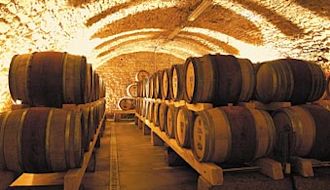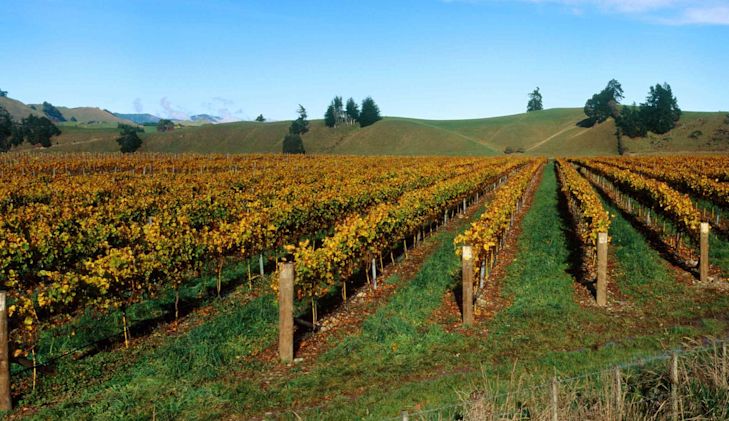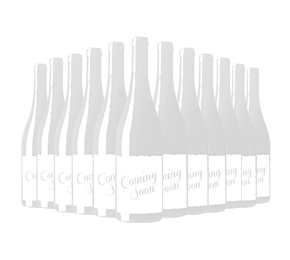Chat with Vinny
Ethereal, floral and enchanting. Aromatic, delicate, racy and expressive. That’s seven reasons to try Riesling, Germany’s superstar white. It’s also perfect with spicy food. But it’s not for everyone. Have you got what it takes to enjoy the crisp, juicy, aristocratic darling of the wine world?
How to choose a Riesling is no simple task.
According to Wine Enthusiast magazine, Germany’s ancient superstar grape is “the supreme shape shifter of the wine world”. Its wines can be totally dry or lusciously sweet. Still or sparkling. Lavishly floral, gloriously fruity or stony and earthen, petrol-like even.
Of course, these many personalities make Riesling a darling of wine critics, sommeliers and collectors. But for mere mortals the lack of a singular, dependable identity is confusing. As are many of the wine labels, covered in gothic-looking script along with terms like Kabinett, Auslese and Trockenbeerenauslese. Gott in Himmel!
So maybe the first question should be not how to choose Riesling but:

Why should you choose Riesling?
Put simply, food. Let me give you a recent example.
A friend was hosting a dinner party. He had the main course sorted. Roast lamb with a 2013 Robert Foley Merlot from Napa. But he was stuck over the starter: a duck salad served with a Thai dressing. What would work?
To me it was a no-brainer. The chillis, zing and spice of the sauce was crying out for the slight sweetness and floral notes of an off dry white. And I knew just the one. For reasons I’ll explain. My Karp Riesling – a beautifully balanced, fresh white from a fabulous 17th-century estate in the grape’s historic heartland.
Today Jobst-Julius Karp is the 13th generation to manage just six precious hectares of Riesling (all tended by hand as the vineyards are too steep for machines). Family owned since 1664, Karp-Schreiber lies in the Mosel – home to most iconic German Rieslings of all, according to Decanter.
What’s more, thanks to the 5-star reviews online, I knew others shared my love of this wine’s steely fresh, limey sweetness and zingy crispness: “absolutely delicious Riesling”, “fantastic”, “my girlfriend loved it”. In fact, not only would My Karp Riesling be perfect with the Thai duck salad starter, but it is also a great starting point for exploring Riesling full stop.
Top table: Riesling has always been a high-end wine
“There was a time,” recalls Sunday Times wine Club President and bestselling wine writer Hugh Johnson, “when all grand dinners began with a Hock or Mosel”.
Mosel, we already know, is synonymous with Riesling. Hock could be a general term for all German white wine, but it tended to refer to white wine from the Rhine region, specifically Riesling.
Accounts of Riesling’s exact origin vary, but it has undoubtedly flourished in Germany for centuries. The earliest recorded reference in Germany was found on cellar logs for the court of Count John IV of Katzenelnbogen, dated 13 March 1435 - now celebrated as Riesling’s unofficial birthday.
Riesling has long been the preferred wine of German nobility, who transported bottles with them throughout their conquests and business dealings across Europe. As a result, Riesling was stockpiled in cellars throughout the country, and collectors soon realized that it was incredibly age-worthy. The highest-quality Riesling can last and improve in the bottle for more than 100 years.

More food pairings with Riesling
Here are some of the best pairing options for different styles of Riesling:
Dry:
A dry Riesling pairs exceptionally well with seafood and shellfish. The mineral notes in the wine blend seamlessly with salty, fishy flavours. Try a glass of dry Riesling the next time you have salmon, swordfish, cod, sushi or other raw fish.
Half-dry:
A slightly less dry Riesling wine matches flawlessly with chicken and other white meats. Soft cow’s milk cheeses, truffle cream and goat cheese also complement half-dry Rieslings, making it a great wine to have with stuffed chicken, chicken Alfredo or risotto.
Sparkling:
A fresh sparkling Riesling goes wonderfully with sea finger foods, such as scallops, clams and molluscs. It’s also delicious on its own as an aperitif!
Sweet:
A sweet Riesling makes a stunning dessert wine, especially when enjoyed alongside a fruit-based dessert like strawberry shortcake or lemon tarts and cakes. Late-harvest Rieslings that are particularly sweet also go well with sugary desserts like cookies and brownies.
The World’s Other Regions for Growing Riesling
While Germany boasts the strongest and oldest ties to Riesling, it is by no means the only country where the aromatic white variety thrives.
Alsace
Following the Rhine River to the south-west and crossing the French border, Riesling also thrives in Alsace. Here you'll find dry, rich, full-bodied examples along with luscious, honeyed dessert wines for enjoying with creamy desserts.
Austria It may not get star billing, but Austria’s Riesling can and often does rank among the very best. Styles range from bracingly fresh and fruity to superbly complex. What makes Austrian Riesling so exciting is its ability to deliver outstanding value in the entry-level range.
Australia
Outside of Europe, head to south Australia’s Clare and Eden Valleys. Conditions here are cool enough to retain the fresh perfumed character of the grape. You'll find bright, mouth-wateringly dry, lime-licked styles with excellent potential for ageing.
North America
Riesling has also made a name for itself across the pond. In Washington State, it’s typically made in a dry style and exhibits ripe stone fruit flavours.
New Zealand
The cooler climate (particularly in Marlborough) means Riesling grapes ripen more slowly here, giving lots of potential for tangy, peach and lemon-scented styles with a light body.

But there's no Riesling quite like German Riesling
Yes, Riesling grows from Alsace and Austria to New York and New Zealand. But it is in Germany that Riesling shines with such kaleidoscopic brilliance.
Generally speaking, German Rieslings are identified by one of two categories. Qualitätswein-level wines come from one of the country’s 13 specific wine-growing regions. They range from dry (Trocken) and off-dry (Halbtrocken) to sweet (Süss).
Prädikatsweins are of superior quality and are broken down into six different sub-categories, which are defined by their ripeness (or must-weights) at the time of picking.
Kabinett: Made from fully ripened grapes. The lightest style of Prädikatswein; can be dry to medium-sweet.
Spätlese: Made from ripe grapes picked several days after normal harvest (aka late-harvest); can be dry to medium-sweet.
Auslese: Made from specially selected bunches of very ripe grapes. Can be dry but often semi-sweet or sweet.
Beerenauslese: Made from overripe, individually selected grapes often affected by noble rot; only made into a sweet wine.
Trockenbeerenauslese: Made from fully botrytized grapes affected by noble rot, resulting in very sweet (and rare) dessert wines.
Eiswein: Made from grapes that reach the same level of sugar content as Beerenauslese. However, the grapes must be naturally frozen on the vine and pressed while still in this solid state.
About the author
Richard Bull
Although good at running up hills, Richard failed to make the military cuvée and turned instead to the drinks trade. After stints at Hennessy, Oddbins and Grants of St James, he arrived at Laithwaites. Here, he spent 15 years writing about real wine and the people who make it. As he wrote from the desk to your door, he was lucky enough to visit vineyards in France, Italy, Spain and Kent - as well as being flown over South Africa's Breede River by a winemaking army veteran who'd just had a heart attack. Qualified to WSET Level 3, he loves the off-the-beaten track reds of the Languedoc, but is currently obsessed with all drops Greek - particularly their super crisp whites.

